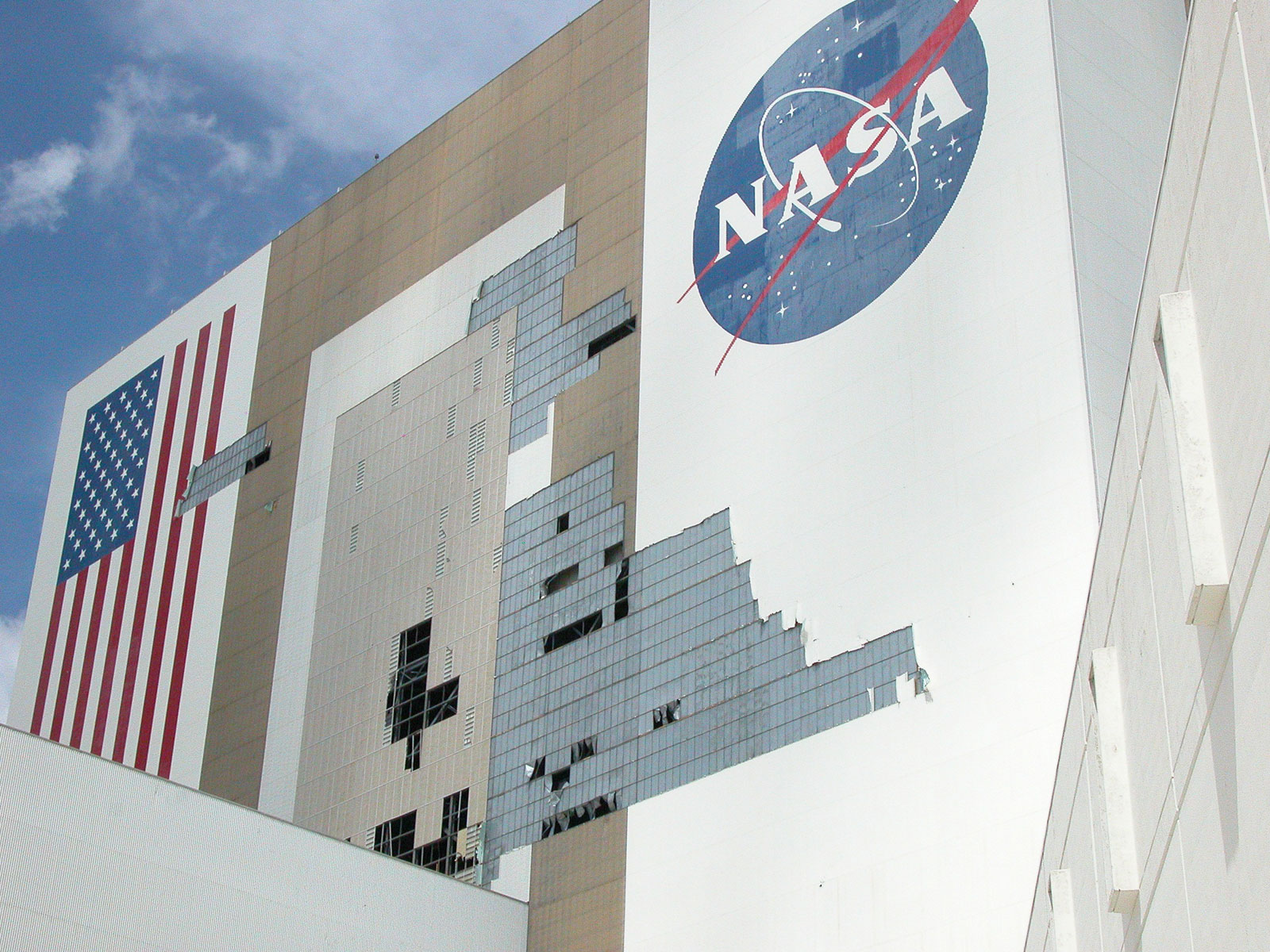NASA's Kennedy Space Center Braces for Hurricane Irma

NASA's Kennedy Space Center (KSC) is bracing for the arrival of Hurricane Irma, a Category 5 storm that is expected to make landfall in southern Florida over the weekend.
The facility is located on Florida's eastern coast, about midway up the peninsula and about an hour's drive due east of Orlando. Officials announced today (Sept. 7) that the facility will be closed from Friday (Sept. 8) through at least Monday (Sept. 11) due to the storm. About 120 KSC personnel will remain on the site to monitor conditions and handle any emergencies that arise, according to Tracy Young, KSC's news chief.
"We have a hurricane plan. We practice it. We review it every year before hurricane season," Young told Space.com. "Some years are more active than others. Some years we get lucky and we don't have to activate the hurricane team." [Hurricane Irma in Photos: Satellite Views]
The center is in Hurricane Condition 3 status, which means officials expect sustained winds of at least 58 mph to reach the center within 48 hours. When that time frame drops to 24 hours, the status will change to Hurricane Condition 2.
In addition to the expected high winds, the NHC has issued a storm surge watch for the Florida peninsula and the Florida Keys. A storm surge watch indicates there is a "danger of life-threatening inundation from rising water moving inland from the shoreline," according to the NHC. "The combination of a dangerous storm surge and the tide will cause normally dry areas near the coast to be flooded by rising waters moving inland from the shoreline."
KSC personnel are preparing the facility for the arrival of strong winds, heavy rain and potential flooding, Young said. KSC is primarily a launch facility, and many of its buildings contain launch hardware, such as NASA's Orion human spaceflight vehicle, which is still being prepared for its first crewed flight. Flight hardware and electronics will be covered with water-resistant material, Young said, to protect them from water that may enter those buildings. Facility personnel are also placing sandbags around door frames to prevent flooding.
The 45th Space Wing (which represents Cape Canaveral Air Force Station (adjacent to KSC), is also preparing for the storm.
Breaking space news, the latest updates on rocket launches, skywatching events and more!
"During HURCON V, 45th Space Wing will begin precautionary preparations to secure property and any launch infrastructure that may be exposed to storm conditions," Air Force officials said in a statement. "All hurricane response teams are now on telephone standby and teams will soon begin to store outdoor items that could become projectiles in a storm."
Irma is reportedly one of the strongest hurricanes ever recorded in the Atlantic Ocean. The storm has caused severe flooding and destruction on many of the Caribbean islands in its path. The National Hurricane Center (NHC) said in an update today that the storm is expected to remain a Category 4 or 5 hurricane "during the next couple of days." [Best Hurricane Irma Apps: Track the Storm and Stay Safe]
"Essential personnel will make final preparations to secure center facilities and infrastructure," NASA said in a statement. "After the storm has left the area, Kennedy's Damage Assessment and Recovery Team will evaluate all center facilities and infrastructure for damage. The spaceport will reopen after officials determine it is safe for employees to return."
The arrival of Irma comes about two weeks after NASA's Johnson Space Center (JSC) in Houston was closed due to extreme flooding caused by Hurricane Harvey. JSC is home to NASA's Mission Control Center, which is responsible for operations on the International Space Station. It is also where NASA's next large-scale telescope, the James Webb Space Telescope, is being stored ahead of its 2018 launch. JSC reopened on Tuesday (Sept. 5).
Follow Calla Cofield @callacofield. Follow us @Spacedotcom, Facebook and Google+. Original article on Space.com.

Calla Cofield joined Space.com's crew in October 2014. She enjoys writing about black holes, exploding stars, ripples in space-time, science in comic books, and all the mysteries of the cosmos. Prior to joining Space.com Calla worked as a freelance writer, with her work appearing in APS News, Symmetry magazine, Scientific American, Nature News, Physics World, and others. From 2010 to 2014 she was a producer for The Physics Central Podcast. Previously, Calla worked at the American Museum of Natural History in New York City (hands down the best office building ever) and SLAC National Accelerator Laboratory in California. Calla studied physics at the University of Massachusetts, Amherst and is originally from Sandy, Utah. In 2018, Calla left Space.com to join NASA's Jet Propulsion Laboratory media team where she oversees astronomy, physics, exoplanets and the Cold Atom Lab mission. She has been underground at three of the largest particle accelerators in the world and would really like to know what the heck dark matter is. Contact Calla via: E-Mail – Twitter

